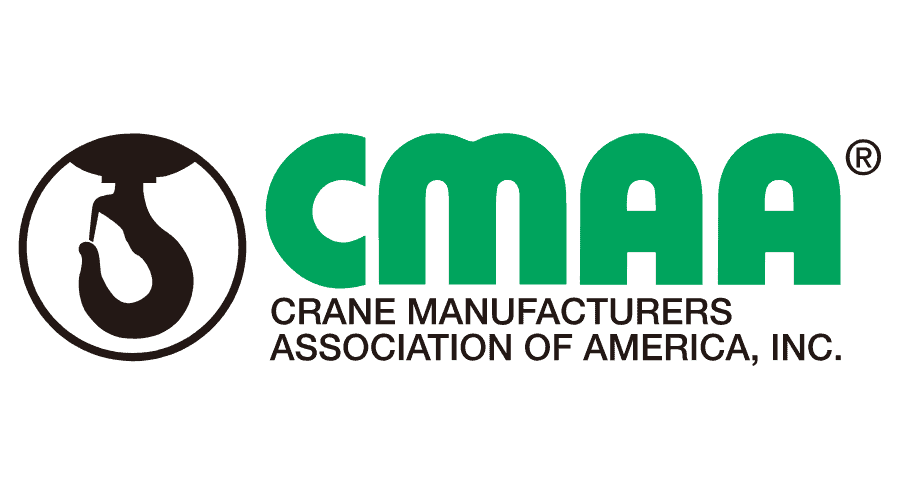 In 1927, some of the country’s top crane manufacturers established guidelines for standardization in the quality and performance of cranes. They created the Electric Overhead Crane Institute (EOCI) to advocate for the safe operation of crane equipment and other products. Over the years, that organization evolved into the Crane Manufacturing Association of America, Inc. (CMAA).
In 1927, some of the country’s top crane manufacturers established guidelines for standardization in the quality and performance of cranes. They created the Electric Overhead Crane Institute (EOCI) to advocate for the safe operation of crane equipment and other products. Over the years, that organization evolved into the Crane Manufacturing Association of America, Inc. (CMAA).
As an independent trade association, CMAA is affiliated with the Material Handling Industry (MHI). It works to develop crane classifications, engineering specifications, inspection requirements, and maintenance factors while promoting education and professional development for members and advocating for safety within the industry.
CMAA Ensures Safety
Workplace accidents and injuries will always be a concern when working with cranes and other heavy equipment, but together we can all do more to prevent them. OSHA, via the CHM Alliance, works with a variety of organizations, including unions, trade organizations, businesses, faith- and community-based groups, and more, to create a culture of safety where employers take all necessary precautions and employees feel empowered to speak up about safety concerns.
The goal of these partnerships is to educate people about their rights and responsibilities regarding safety. They develop and provide compliance tools and educational resources.
CMAA Determines Inspection Requirements
Safety starts with equipment that works properly. The CMAA crane classifications help people choose the overhead hoist that is right for the job. This ensures the proper fit and speed related to what you’re lifting.
After you have the right hoist, you need to make sure it’s in working order every day. The Occupational Safety and Health Administration (OSHA), the American Society of Mechanical Engineers (ASME), and the Hoist Manufacturers Institute (HMI) all dictate regular overhead hoist inspections, which allow you to identify any problems with the equipment before you use it.
Hoist inspections are not to be performed by anyone without the proper training. That formal education should include training in operations, crane safety codes along with federal, state, and local regulations, crane and overhead hoist terminology, and how to document findings. The CMAA specifies that crane inspectors need a minimum of 2,000 field experience hours in maintenance, servicing and repairing, and testing and modifying cranes and hoists.
Maintenance Factors Are Established by CMAA
Each type of hoist has its own set of guidelines for maintenance as set by the CMAA, and OSHA and ANSI outline when cranes should be inspected:
- Initial:New and altered cranes must be inspected to ensure compliance with regulations.
- Functional:Cranes should be inspected before every shift. Following a daily hoist inspection checklist ensures you don’t forget anything or grow complacent with the inspection.
- Frequent:These inspections include everything in the functional inspection as well as operating mechanisms. These are performed more often if the crane is in heavy use.
- Periodic:The frequency of these in-depth inspections also depends upon how heavily the crane is used, which may be annually or quarterly. Some states require more frequent periodic inspections, no matter how often the crane is used. California, for example, requires quarterly inspections.
Your daily hoist inspection checklist will help you discover any damages and concerns like excessive wear, shiny surfaces, corrosion, leaking engines or cylinders, or blistering hoses. These may indicate you need maintenance or repair, which is essential to keep your crane running safely.
CMAA Members Respond in Crisis Situations
Now more than ever, the companies of the MHI Overhead Alliance are committed to their employees and communities. These uncertain times have called for continual evaluation and consideration to make sure everyone is doing everything they can to help.
CMAA has been supporting those customers serving at the front lines of the pandemic. Communication efforts have increased, particularly email from key leaders, project managers, and account managers, to keep people posted about projects and operations, all of which are moving forward. Members have stepped up to fulfill vital needs, including the design and customization of overhead handling equipment to be used for producing life-saving medical equipment. Various suppliers have fulfilled emergency deliveries of parts for crane maintenance and repair. Others have focused on charitable outreach by donating PPE to local hospitals and sending funds to non-profit organizations.
CMAA recognizes the vulnerability of the community at this strange and sensitive time. They want to help, and they will continue to identify ways to do so. Moving through the crisis means moving through it together.
American Crane is a member of the Crane Manufacturing Association of America, and we’re proud to be part of an organization that prioritizes crane and hoist safety and steps up to serve the community in difficult times.
As your Expert, Craftsman, and Partner in cranes and equipment, our primary objective is to make your job easier with turnkey material handling solutions for nuclear, aerospace, energy, and general manufacturing applications. Our integrated approach, in-house resources, depth of capabilities, and years of experience allow us to provide high-quality solutions with friendly, prompt service. Contact us to learn more.


